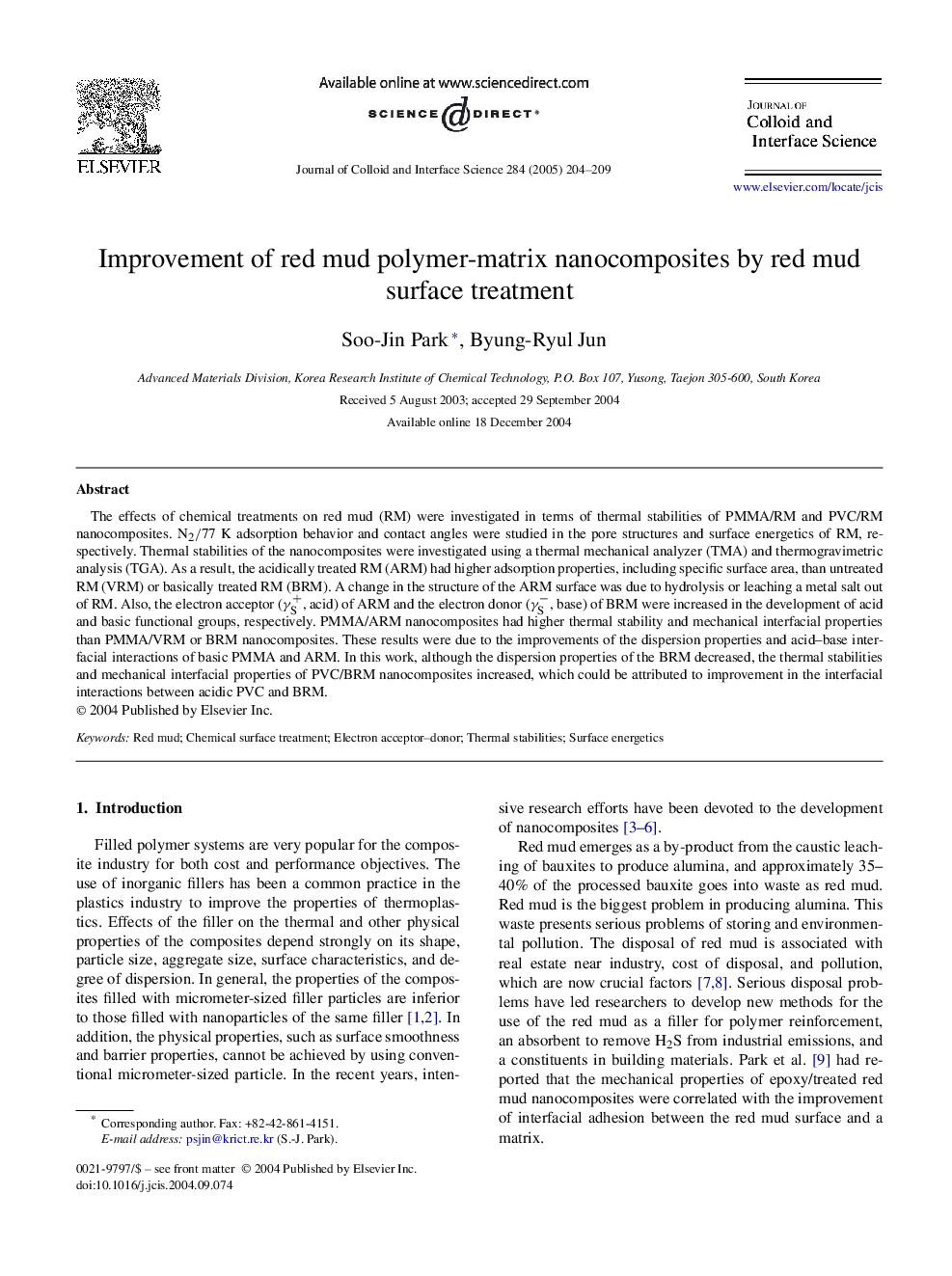| Article ID | Journal | Published Year | Pages | File Type |
|---|---|---|---|---|
| 10378167 | Journal of Colloid and Interface Science | 2005 | 6 Pages |
Abstract
The effects of chemical treatments on red mud (RM) were investigated in terms of thermal stabilities of PMMA/RM and PVC/RM nanocomposites. N2/77 K adsorption behavior and contact angles were studied in the pore structures and surface energetics of RM, respectively. Thermal stabilities of the nanocomposites were investigated using a thermal mechanical analyzer (TMA) and thermogravimetric analysis (TGA). As a result, the acidically treated RM (ARM) had higher adsorption properties, including specific surface area, than untreated RM (VRM) or basically treated RM (BRM). A change in the structure of the ARM surface was due to hydrolysis or leaching a metal salt out of RM. Also, the electron acceptor (γS+, acid) of ARM and the electron donor (γSâ, base) of BRM were increased in the development of acid and basic functional groups, respectively. PMMA/ARM nanocomposites had higher thermal stability and mechanical interfacial properties than PMMA/VRM or BRM nanocomposites. These results were due to the improvements of the dispersion properties and acid-base interfacial interactions of basic PMMA and ARM. In this work, although the dispersion properties of the BRM decreased, the thermal stabilities and mechanical interfacial properties of PVC/BRM nanocomposites increased, which could be attributed to improvement in the interfacial interactions between acidic PVC and BRM.
Related Topics
Physical Sciences and Engineering
Chemical Engineering
Colloid and Surface Chemistry
Authors
Soo-Jin Park, Byung-Ryul Jun,
